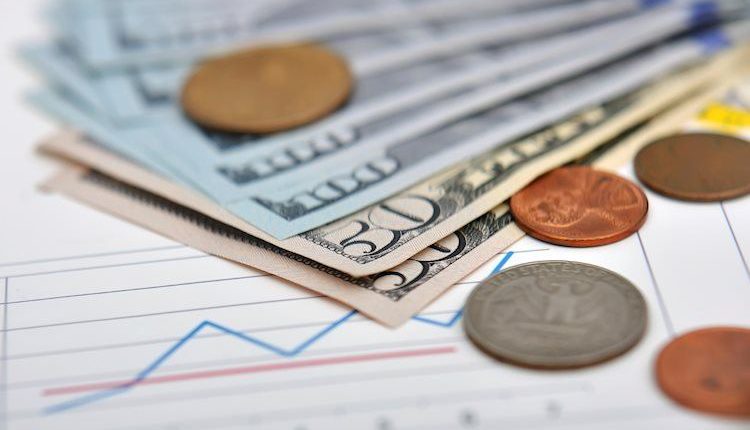- The DXY index stands at 107.00, up by 0.30% on the day.
- The ISM Manufacturing PMI from October came in lower than expected, as well as the ADP employment change.
- Markets await the Fed decision later in the session.
The US Dollar (USD) moved higher on Wednesday with the DXY Index rising to a nearly one-month high above 107.00. Despite soft economic data from the US reported earlier in the session and falling US bond yields, a cautious market mood ahead of the Federal Reserve (Fed) decision keeps the Greenback afloat.
The focus is on the United States’ economic situation as markets await data to continue modeling their expectations on the next Federal Reserve (Fed) decisions. However, the probability of a 25 basis points increase in December, as per the CME FedWatch tool, remains slim, dampening the USD’s potential for significant gains. At Wednesday’s meeting, a pause is priced in. The Fed is expected to announce a hawkish hold as in September, pointing out that they will remain data-dependent but leaving the door open for further tightening if needed.
Daily Digest Market Movers: US Dollar retreats from one-month high after weak labor and economic activity figures
- The US DXY index traded in the 106.80 – 107.10 range on Wednesday.
- The US labour market is displaying signs of weakness ahead of Friday’s Nonfarm Payrolls from October.
- The Automatic Data Processing Inc. (ADP) reported that Employment Change fell short of expectations in October. The private sector added 113,000 jobs vs the 150,000 expected but accelerated compared to its last reading of 89,000.
- On the economic activity front, The Institute for Supply Management (ISM) reported that its Manufacturing PMI printed at 46.7 in October,below the 49 expected, and declined from its previous reading of 49.
- Meanwhile, US government bond yields are falling sharply, with the 2, 5 and 10-year yields declining to 5.01%, 4.72% and 4.79%, respectively, contributing to the USD loss of momentum.
- According to the CME FedWatch Tool, the odds of a 25 basis points hike in December are still low, around 20%. Chair Powell’s presser and the policy statement will likely impact those expectations.
Technical Analysis: The US Dollar Index still holds the 20-day SMA with a limited bullish momentum
Observing the daily chart, signs of bullish exhaustion are apparent for the DXY Index. The Relative Strength Index (RSI) exhibits a flat slope above its midline, while the Moving Average Convergence (MACD) histogram displays red bars. As for now, the pair is above the 20,100 and 200-day Simple Moving Average (SMA), indicating a favorable position for the bulls in the bigger picture, but if the bears manage to breach the 20-day average, more downside will be on the horizon.
Supports: 106.30 (20-day SMA), 106.00, 105.70.
Resistances: 106.90, 107.00, 107.30.
US Dollar FAQs
The US Dollar (USD) is the official currency of the United States of America, and the ‘de facto’ currency of a significant number of other countries where it is found in circulation alongside local notes. It is the most heavily traded currency in the world, accounting for over 88% of all global foreign exchange turnover, or an average of $6.6 trillion in transactions per day, according to data from 2022.
Following the second world war, the USD took over from the British Pound as the world’s reserve currency. For most of its history, the US Dollar was backed by Gold, until the Bretton Woods Agreement in 1971 when the Gold Standard went away.
The most important single factor impacting on the value of the US Dollar is monetary policy, which is shaped by the Federal Reserve (Fed). The Fed has two mandates: to achieve price stability (control inflation) and foster full employment. Its primary tool to achieve these two goals is by adjusting interest rates.
When prices are rising too quickly and inflation is above the Fed’s 2% target, the Fed will raise rates, which helps the USD value. When inflation falls below 2% or the Unemployment Rate is too high, the Fed may lower interest rates, which weighs on the Greenback.
In extreme situations, the Federal Reserve can also print more Dollars and enact quantitative easing (QE). QE is the process by which the Fed substantially increases the flow of credit in a stuck financial system.
It is a non-standard policy measure used when credit has dried up because banks will not lend to each other (out of the fear of counterparty default). It is a last resort when simply lowering interest rates is unlikely to achieve the necessary result. It was the Fed’s weapon of choice to combat the credit crunch that occurred during the Great Financial Crisis in 2008. It involves the Fed printing more Dollars and using them to buy US government bonds predominantly from financial institutions. QE usually leads to a weaker US Dollar.
Quantitative tightening (QT) is the reverse process whereby the Federal Reserve stops buying bonds from financial institutions and does not reinvest the principal from the bonds it holds maturing in new purchases. It is usually positive for the US Dollar.
Read the full article here

